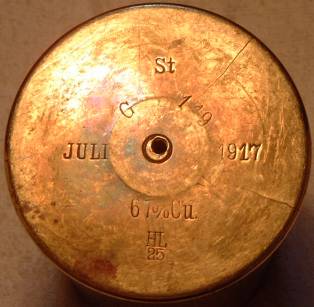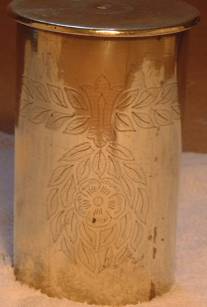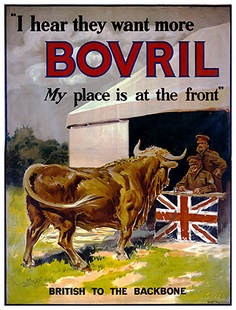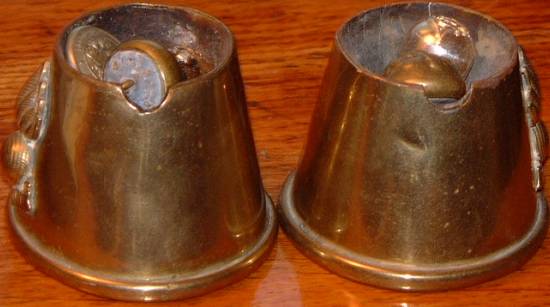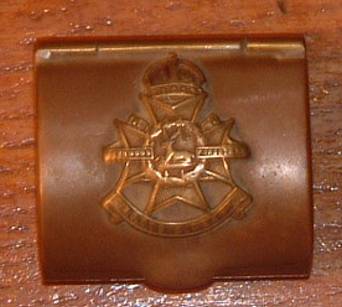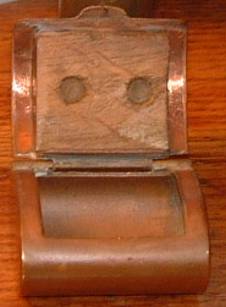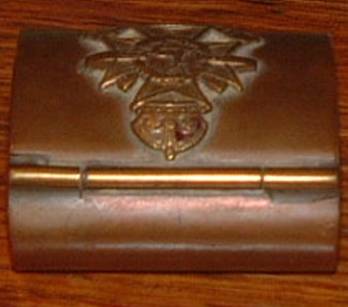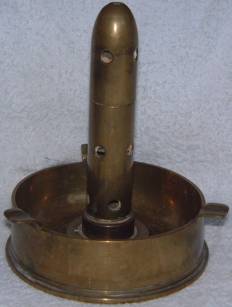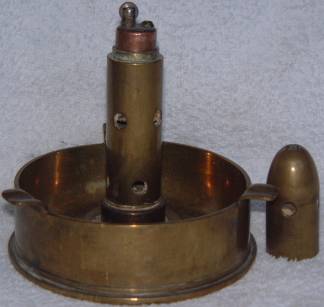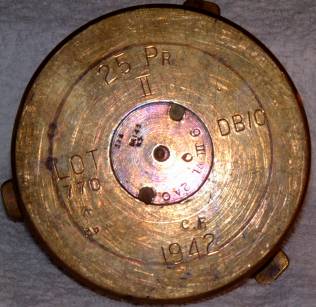Thanks to Spotter and Andy D for this information on the British ordnance collectors network. A German 77mm case dated 1917. The markings on the bottom are HL=Haniel Luege of Dusseldorf St= strengthened case and the 67% CU means the case is 67% copper.
|
Coal scuttle. The shell case is probably German as it has similar markings to the first shell case above unfortunately the date is no longer legible and somebody has scratched ARRAS on the bottom. |
|  |
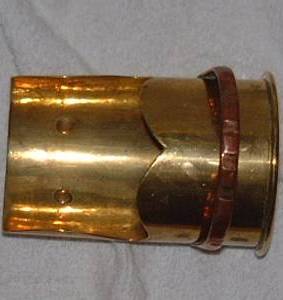 |
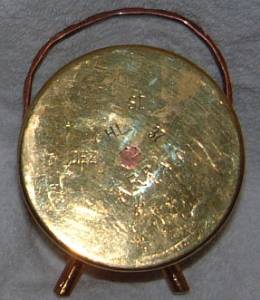 |
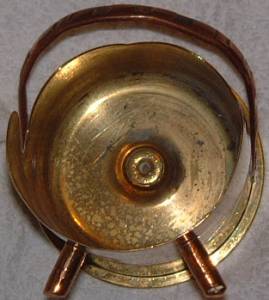 |
Royal artillery ash trays undated. The badges are collar badges. As you can see I use them to keep my button collection in.
|
Snuff box or pin box? with Sherwood foresters Notts and Darby coller badge stuck to the lid.Undated it has a continuos hinge across the back see third picture. |
Ashtray and lighter combined. The ashtray is a cut down cartridge case from a British 25 pounder MKll dated 1942.The lighter has been made using an internal primer tube possibly a number 9 as used in the 17 pdr. Thanks to spotter and quatermass on the British ordnance collectors network for this information.
And thanks to Tynesideirish on the militaria collectors network for the following information about the weapon its self.
A 3.45 in (87.6 mm) weapon firing a 25 pound (11 kg) HE shell. It was mounted on late model 18 pounder carriages. One of these used a firing platform and this configuration was adopted for the new build guns. The firing platform was lowered and the gun pulled onto it, providing a flat surface that allowed the gunners to quickly turn the weapon in any direction.
25 pounder used howitzer type variable charge ammunition. For the Mk 1 Ordnance on 18 pounder carriage this was limited to three different "charges", Charge 1, 2 and 3 in a single cartridge. The 'proper' 25-pdr, Mk 2 Ordnance on Mk 1 Carriage, also had charge super in a separate cartridge. An increment for charge super was introduced in 1942 to provide higher velocity for anti-tank shot. Subsequently these increments were added to charges 2 and 3 to give an additional three combinations charges for use with upper register (high angle) fire. The introduction of the increment to charge super necessitated the addition of the muzzle-brake. 25-pdr was separate loading, the shell was loaded and rammed then the cartridge in its brass case was loaded and the breech closed. In British terminology 25 pounder was called "QF" because the cartridge case provided obturation (it provided the gas seal in the breech). |
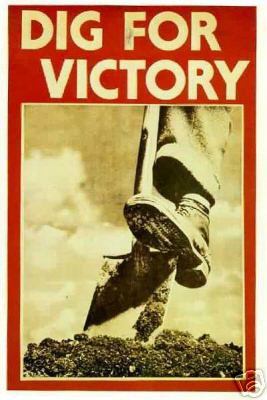 BACK TO MILITARY EQUIPMENT BACK TO MILITARY EQUIPMENT |

